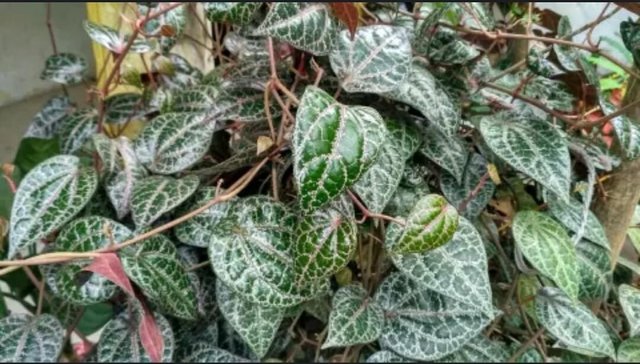
Third party reference
Do you know the difference between red betel and regular betel? At first, I did not even understand. As far as I know, betel usually green. In the past, the elderly people in my native land have a lot of hobbies that chew this green betel. Interestingly, although their teeth eventually appear reddish, but it remains strong and intact until the age of twilight. Apparently, it is a positive effect of the active substances contained in the green betel that they chew on a regular basis.
"Sorry, the red betel, mbak," said a waiter pharmacist when I asked whether the pharmacy is sold in betel already packaged like tea bags.
In my heart, I feel very curious, what is red betel betel with green betel? As quoted from e-journal.biologi.lipi.go.id (retrieved 3/1/2018), it turns out, both types of betel is indeed different species, although still one family, namely Piperaceae and also one order, namely Piperales. The green sirih has the Latin name Piper betle, while the green betel Piper ornatum.
The form of two types of betel is almost the same, just different colors, ie as the name implies, Piper ornatum red heart. Red betel is widely referred to as wild betel, because it grows wild in the forests. However, based on various studies, it turns out the content of red betel chemicals no less than the green betel. Quoted from ejournal.litbang.depkes.go.id (Vol 6 / No2 / 2013), the content of essential oils in red betel and green betel was the same magnitude.
Red betel, as mentioned by herbs-medicine.com (31/1/2017) is rich in compounds such as hydroxycavicol, kavicol, kavibetol, allylprocatalol, carvacrol, eugenol, pcymene, cineole, caryofelene, estragol, terpenene, phenyl propada , alkoloid, saponins, tannins and also flavonoids. It's very rich, is not it?
The type of flavonoid contained in red betel is anthocyanin, the pigment that causes a plant red, purple to blue. Anthocyanins, according to Dr. Dahlia, MS, as quoted from library.um.ac.id (3/1/2018), is a compound that is very useful for health, because it is anti-carcinogen, anti-inflammatory, anti-hepatoksik, antibacterial, antialergenic and so on.
Because of its very rich chemical content, red betel has many benefits, including:
Prevent the occurrence of cancer (anticarcinogen)
Preventing inflammation (anti-inflammatory)
Prevent the occurrence of damage to cells in the liver due to the work of the liver in offering toxins (antihepatoksik)
Helps body immunity by fighting bacteria attack (antibacterial)
Reduce the risk of stroke
Reduce the risk of diabetes mellitus, kidney stones, gout and so on
How to Take It?
Usually, red betel is consumed by boiling about 3-4 pieces of red betel leaf, then we drink it regularly. However, now there are many available red betel packaged like tea bags, so we simply add with hot water. Can also be added with honey and lime juice. Do not forget, also balance with lots of drinking water.
For the record, red betel should be consumed as a useful supplement to prevent the above-mentioned disease. So, not as a main drug, especially if you already have the disease.
It would be good if the use is consulted with medical personnel, in order to prevent various complications or unwanted side effects.
Thanks for your information,
Downvoting a post can decrease pending rewards and make it less visible. Common reasons:
Submit